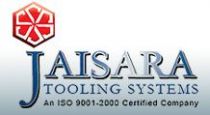Global Protein Hydrolysates Market Estimated to Grow with a CAGR of 9.8% During the Forecast Period, 2018-2027 - ResearchAndMarkets.com
The "Protein Hydrolysates - Global Market Outlook (2018-2027)" report has been added to ResearchAndMarkets.com's offering.
The Global Protein Hydrolysates Market accounted for $586 million in 2018 and is expected to reach $1,359.31 million by 2027 growing at a CAGR of 9.8% during the forecast period.
The growing demand for plantobased and animal-based protein hydrolysates in the sports industry and high usage of protein in infant nutrition are the boosting elements for the market. Whereas, the huge cost of R&D, and low popularity in developing countries owing to the high production cost is restraining the market growth.
Protein hydrolysates are usually used as a substitute protein source in commercial products. They consist of a mixture of different proteins and peptides which is formed by the hydrolysis of intact proteins. There has been exceptional demand for low-priced plantoderived protein hydrolysates in recent years, owing to their potential nutritional applications. Protein hydrolysates are extracted from agricultural crops such as wheat, soy, rapeseed, sunflower and barley, it is also extracted from milk and animals. The bioactivity of these protein hydrolysates, have antioxidant and anti-inflammatory capabilities.
Based on the application, the infant nutrition segment has a growing prominence in the near future on an account of the need for protein in building and proper development of infant tissues. By geography, North America is likely to have a huge demand due to the changing lifestyle along with rising awareness about the usage of protein hydrolysates in most of the cities in the U.S. and Canada.
What the report offers:
- Market share assessments for the regional and country-level segments
- Strategic recommendations for the new entrants
- Covers Market data for the years 2017, 2018, 2019, 2023 and 2027
- Market Trends (Drivers, Constraints, Opportunities, Threats, Challenges, Investment Opportunities, and recommendations)
- Strategic analysis: Drivers and Constraints, Product/Technology Analysis, Porter's five forces analysis, SWOT analysis, etc.
- Strategic recommendations in key business segments based on the market estimations
- Competitive landscaping mapping the key common trends
- Company profiling with detailed strategies, financials, and recent developments
- Supply chain trends mapping the latest technological advancements
Key Topics Covered:
1 Executive Summary
2 Preface
2.1 Abstract
2.2 Stake Holders
2.3 Research Scope
2.4 Research Methodology
2.4.1 Data Mining
2.4.2 Data Analysis
2.4.3 Data Validation
2.4.4 Research Approach
2.5 Research Sources
2.5.1 Primary Research Sources
2.5.2 Secondary Research Sources
2.5.3 Assumptions
3 Market Trend Analysis
3.1 Introduction
3.2 Drivers
3.3 Restraints
3.4 Opportunities
3.5 Threats
3.6 Application Analysis
3.7 Emerging Markets
3.8 Futuristic Market Scenario
4 Porters Five Force Analysis
4.1 Bargaining power of suppliers
4.2 Bargaining power of buyers
4.3 Threat of substitutes
4.4 Threat of new entrants
4.5 Competitive rivalry
5 Global Protein Hydrolysates Market, By Type
5.1 Introduction
5.2 Animal Protein Hydrolysates
5.3 Meat
5.4 Egg Protein Hydrolysates
5.5 Yeast Protein Hydrolysates
5.6 Marine Protein Hydrolysates
5.7 Milk Protein Hydrolysates
5.8 Plant Protein Hydrolysates
5.9 Silk Protein Hydrolysate
6 Global Protein Hydrolysates Market, By Source
6.1 Introduction
6.2 Plants
6.3 Animals
6.4 Microbial
7 Global Protein Hydrolysates Market, By Form
7.1 Introduction
7.2 Powder Form
7.3 Liquid Form
8 Global Protein Hydrolysates Market, By Process
8.1 Introduction
8.2 Enzymatic Hydrolysis
8.3 Acid & Alkaline Hydrolysis
9 Global Protein Hydrolysates Market, By Application
9.1 Introduction
9.2 Medical Nutrition
9.3 Infant Nutrition
9.4 Animal Feeds & Nutrition
9.5 Weight Management
9.6 Sports Nutrition
9.7 Cell Nutrition
9.8 Dietary Supplements
9.9 Nutraceuticals
9.10 Food & Beverages
9.11 Cosmetics & Personal Care
9.12 Pharmaceutical
9.13 Protease Application
9.14 Clinical Nutrition
10 Global Protein Hydrolysates Market, By Geography
10.1 Introduction
10.2 North America
10.2.1 US
10.2.2 Canada
10.2.3 Mexico
10.3 Europe
10.3.1 Germany
10.3.2 UK
10.3.3 France
10.3.4 Spain
10.3.5 Rest of Europe
10.4 Asia Pacific
10.4.1 Japan
10.4.2 China
10.4.3 India
10.4.4 Australia
10.4.5 New Zealand
10.4.6 South Korea
10.4.7 Rest of Asia Pacific
10.5 South America
10.5.1 Argentina
10.5.2 Brazil
10.5.3 Chile
10.5.4 Rest of South America
10.6 Middle East & Africa
10.6.1 Saudi Arabia
10.6.2 UAE
10.6.3 Qatar
10.6.4 South Africa
10.6.5 Rest of Middle East & Africa
11 Key Developments
11.1 Agreements, Partnerships, Collaborations and Joint Ventures
11.2 Acquisitions & Mergers
11.3 New Product Launch
11.4 Expansions
11.5 Other Key Strategies
12 Company Profiling
12.1 Koninklijke DSM N.V.
12.2 Tate & Lyle PLC
12.3 Abbott Laboratories
12.4 Kerry Group PLC
12.5 Glanbia PLC
12.6 Frieslandcampina
12.7 Hilmar Ingredients
12.8 Arla Foods
12.9 Amco Proteins
12.10 Archer Daniels Midland Company
12.11 Roquette
12.12 Danone Nutricia
12.13 AGROPUR US
12.14 Agrilife
12.15 Kemin Industries, Inc
12.16 Akola Chemicals India Limited
12.17 Brisk Bioscience
12.18 Carbery Group Ltd.
12.19 Ingredia SA
For more information about this report visit https://www.researchandmarkets.com/r/was77
View source version on businesswire.com: https://www.businesswire.com/news/home/20200121005546/en/




